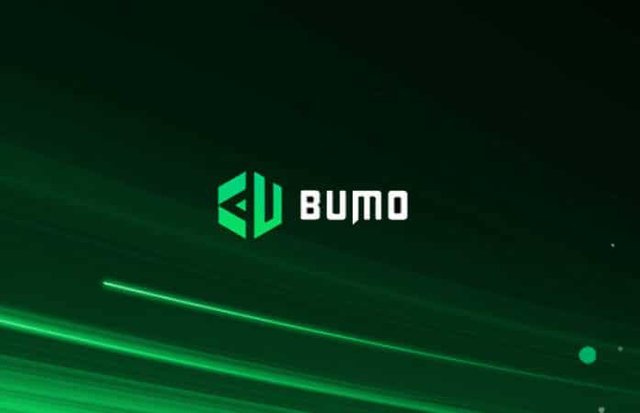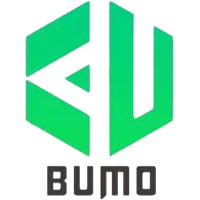"BUMO knows an ecosystem of decentralized applications with a broad digital confidence"

INTRODUCTION
Could it be that science fiction finally reached us?
What would happen if our alarm clock radio told our food processor to prepare that milkshake, because we are about to go to work? What would you think of a refrigerator, which replenishes food items once they are exhausted, and pays for them using their own electronic wallet ...?
Or what would happen if a smart device in your home told your bathtub to prepare an aromatic bath because you are about to arrive home and you are stressed?
And how did you know you were stressed, because your wristwatch was communicated to your smart phone and he got in touch with your digital housekeeper. Which automatically climatizo your house and as soon opened the electric gate of your garage put to play a relaxing and reassuring music.
It is not science fiction, but we are simply entering the domain of the Internet of Things.
What is the Internet of things?
In short, the IoT or Internet of Things is a network of everyday devices, which are interconnected through WiFi access, communicate and share data with each other to complement each other in an intelligent way.
These devices can be anything from refrigerators, alarm clocks, cars to coffee makers, food processor etc.
The next frontier of the blockchain is to allow information to interact digitally using existing smart devices that are already present all over the world.
Modern devices with IoT capability use sensors to monitor and analyze routines and procedures around them, including our habits, evaluating them using algorithms. Once the device detects the need for your services, take the appropriate measures.
And that's just the tip of the iceberg in an ocean of innovations that the Internet of things has for us.
Gartner analysts are confident that in 2020 a network of more than 20 billion devices will meet our needs, even the most basic household items.
The FINTECH do not want to run out of their part
The new financial technology companies or FINTECH and the traditional banks and companies are also riding on this aircraft carrier. They know that facilitating the comfort of their clients is going to be the most important thing to guarantee the loyalty of the same, in addition many future applications of the Internet of things require the integration of financial services.
With the start of PSD2 (Payment Services Directive), the legal basis for the third parties requesting the data of the account was settled, in case the clients accept it. Finance moves the world and in the digital economy that movement is at the speed of light.
The integration of all these intelligent devices and their interaction represent a problem to solve today. And a solution that has big promises for the Internet of things when it comes to security is blockchain.
Blockchain was originally developed as an integral part of the cryptocurrency model. It is a distributed accounting technology, where there is no central instance or data storage.
And to speed up this adaptation between IoT and Blockchain came BUMO

What is BUMO?
"BUMO is a public next-generation commercial chain block for ubiquitous and reliable value transfer, which aims to create a decentralized application ecosystem with broad digital confidence, free-flow value and public sharing applications" .
"BUMO focuses on improving the ease of transfer through various networks within the Internet of Things, Fintech (Financial Technology) and the social media industry. By connecting digital assets, smart devices and user data, BUMO will allow the true benefits of the digital economy to improve people's lives. "
The main problems facing the cryptographic ecosystem
The two main problems in crypto are scalability and interoperability, to which a third problem is being added, which is the complexity of implementation, let's see them in more detail.
Problem # 1: Scalability
Cryptocurrencies, like the architecture of Bitcoin and Ethereum, were simply not designed to be popular or highly sought after, so the lack of scalability is a constant. I dare say that cryptocurrencies are being punished for their own success.
Where are the bottlenecks that make scalability difficult?
- First of all, the fact that in the work consensuses there are only as many transactions as a miner can handle at the same time.
- Second the blocks in the chain have predetermined limits.
- In Bitcoin the limit is of size which is 1 MB. Therefore, there is only as much data as can fit within a block. In Ethereum they have a gas limit which is 6.7 million per block.
For these reasons, your transaction is placed in a waiting queue before entering and this slows down operations. Maybe the block is filled even before the miner recognizes your transaction.
If this happens, then your transaction will have to wait until the next block is removed, which is 10 minutes in Bitcoin and 15 seconds in Ethereum.
What does BUMO offer to solve this?
BUMO has designed and adapted a series of tools to solve the lack of scalability of the blockchain, these are:
The multisig account: It is an account that can be opened and controlled by multiple parties at the same time. It is ideal for companies that require several firms to carry out transactions.
The use of the Merkle-Patricia tree: to help store data in an efficient way since it combines the benefits of the Merkle tree and Patricia's tree.
With the Merkle tree, you will significantly reduce the time required to find out if a particular transaction belongs to that block or not.
While Patricia's tree helps reduce the depth of the ledger tree and increases tree balance.
The "Trailer" system: which differentiates data in chain data and out-of-chain data. This is basic to increase the transaction speed as the data gets bigger and heavier, reducing the hardware costs because the tension in the nodes will be much lower.
The architecture of orbit: that helps to create the multiform architecture of 2 layers of BUMO.
BUMO uses a "Two-layer polymorphic architecture for a multi-child block chain" structure to address all present and future scalability needs
A 2-layer multi-chain consensus system: that will scale them up to 10,000 transactions per second.
Having a consensus algorithm without trust, which is tolerant to Byzantine failures is the backbone of a cryptocurrency project. A consensus algorithm is a computer process used to achieve an agreement on a single data value between distributed processes or systems.
BUMO has opted for the creation of a two-layer multiple-chain consensus algorithm, which generates a set of validation nodes for the main chain by voting according to the DPoS, and then generates blocks by the selected validation nodes at through the improved BFT algorithm, thus achieving greater transaction performance, scalability and security. They are calling this the "BU firework".
DPoS: The delegated participation test network (DPoS) has proven to be a superior system, since it is the most decentralized network that exists. The DPoS is highly scalable and provides quick verification of transactions. Therefore, DPoS is the safest, most reliable and most profitable mining tool.
BFT: One of the advantages of BFT is that it allows scalability and transaction fees are very low. BFT allows validators to manage the status of a chain and share messages with each other to reach the correct transaction log and ensure honesty.
Problem # 2: Interoperability
In this universe there are many cryptocurrencies and it is extremely difficult for these individual entities to communicate with each other. It is difficult for Bitcoin to know what is happening in Ethereum and vice versa.
And this generates the need for trading platforms, the problem with these platforms is that they are centralized and can be hacked. This is basically what happened to Binance on February 8, 2018, which completely paralyzed his services.
For the blockchains to succeed, they must be able to interact with legacy systems such as financial institutions, etc. At this time, it is extremely difficult for the encrypted world and the inherited world to interact with each other, that must be overcome in order for cryptocurrencies to be massively adopted.
What does BUMO offer to solve this situation?
The "Canal" system: which helps with interoperability. The channel system consists of two layers or chains:
Main chains
The main chain carries several cross chains. Allowing the main chain to communicate with the crossed chains and that these crossed chains communicate with each other?
Cross chains
They consist of collection nodes and validation nodes. The collection nodes receive the information and the validation nodes are responsible for providing a high level consensus for the cross chain, which routes the data from different blockchains to the target blockchain.
Problem # 3: Complications of application
Most of the blockchain projects out there tend to be too complicated for their own good.
How does BUMO propose to solve it?
BUMO aims to offer its developers the best possible tools to help them get started. For that he has created tools as user-friendly as possible.
From tool to create intelligent contracts without needing to be an expert, to tools to launch dApps without the need of development knowledge. Because it gives you access to an easy-to-use template library to achieve what you need.
It even allows developers to create applications without creating a smart contract
Use cases
In the national health system
Martin is hospitalized urgently in the central hospital, nobody knows him and his medical history is totally unknown in this hospital, but this hospital is adapted to the national central health system since the decentralized BUMO adapted platform is being used in the country. to the health system which makes it much easier to give Martin emergency services according to his medical history, knowing if it is possible to administer a given medication or if he is allergic to it, which can save his life.
Toll collection
Your vehicle has an artificial intelligence mechanism, which is adapted to a wallep, which allows you to pay directly and digitally, by passing daily through the toll bridge that separates the financial center of the city from the area where you live. since the municipality contracted the BUMO platform to carry out this type of actions.
The team

Conclusion
How you could see BUMO is designed to help increase the scalability of consensus systems and to leave behind obsolete systems such as PoW or PoS, which by their very nature created bottlenecks in transactions.
Big and small companies can count on BUMO when adopting the blockchain since it has addressed the three problems that hindered its implementation, scalability, interoperability and difficulty and implementation, and has achieved this with an emphasis on security and transparency of transactions.
More Information & Resources:
- BUMO Website
- BUMO WhitePaper
- BUMO TechnicalPaper
- BUMO Telegram
- BUMO Weibo
- BUMO Reddit
- BUMO Facebook
- BUMO Twitter
- BUMO Github
- BUMO Wallet
Contest sponsored by @originalworks
https://twitter.com/CarlosJMontill3/status/1052278096265732096
bumotwitter
bumo2018

This post has been submitted for the @OriginalWorks Sponsored Writing Contest!
There is also a bonus CateredContent Event to earn additional Steem!
You can also follow @contestbot to be notified of future contests!
Congratulations! This post has been upvoted from the communal account, @minnowsupport, by trituratusmiedos from the Minnow Support Project. It's a witness project run by aggroed, ausbitbank, teamsteem, someguy123, neoxian, followbtcnews, and netuoso. The goal is to help Steemit grow by supporting Minnows. Please find us at the Peace, Abundance, and Liberty Network (PALnet) Discord Channel. It's a completely public and open space to all members of the Steemit community who voluntarily choose to be there.
If you would like to delegate to the Minnow Support Project you can do so by clicking on the following links: 50SP, 100SP, 250SP, 500SP, 1000SP, 5000SP.
Be sure to leave at least 50SP undelegated on your account.